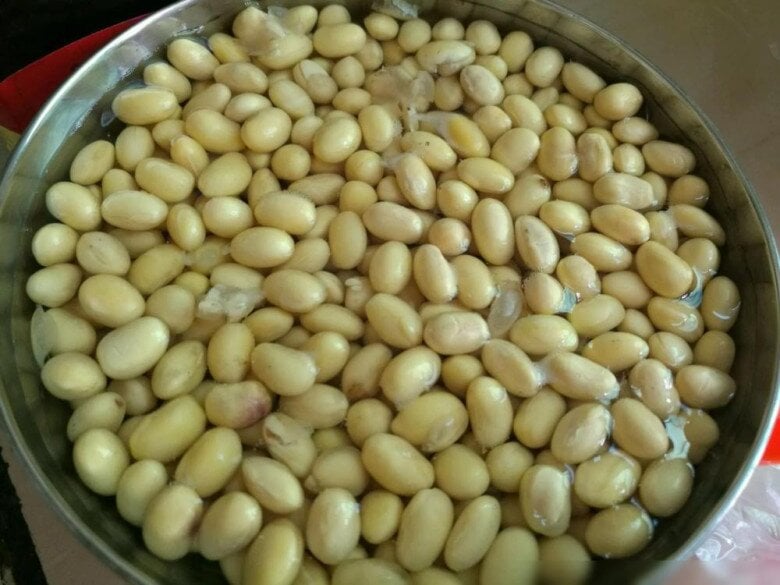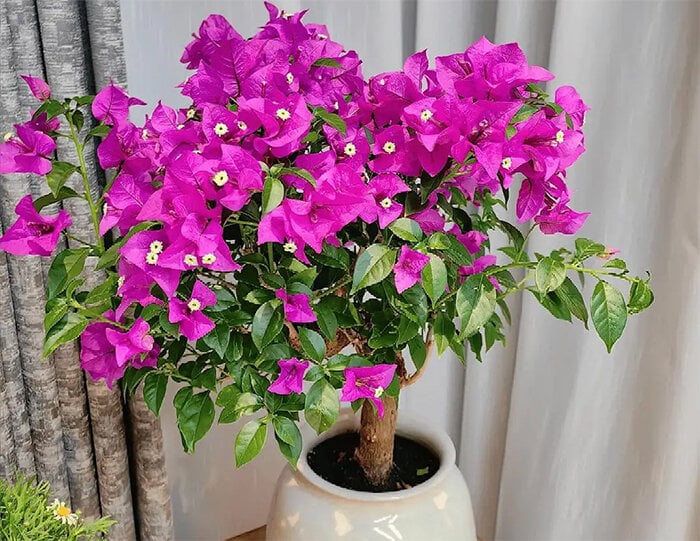Bougainvillea is one of the most popular ornamental plants, known for its vibrant beauty and unique shape. The colorful bougainvillea flowers come in shades of red, pink, yellow, and white, resembling tiny lanterns that adorn living spaces. While they can bloom year-round, spring and autumn are the seasons when bougainvillea truly shines with its most vibrant display.
However, maintaining the health and beauty of bougainvillea is no easy feat. Enthusiasts of this plant often emphasize the critical importance of proper care before it flowers. Factors such as adequate watering, sufficient light exposure, and timely fertilization must be carefully considered. Notably, during winter, improper care can easily lead to root rot due to excess water or incorrect fertilization.
To stimulate the growth of bougainvillea roots in March, which is the preparatory period for the upcoming flowering season, it is advisable to add certain types of suitable fertilizers. This will strengthen the plant and prepare it for the upcoming blooming spectacle.
Using Fermented Soybeans to Care for Bougainvillea
Fermented soybeans are an organic fertilizer rich in nutrients, containing significant amounts of nitrogen, potassium, and phosphorus. These elements act as a bountiful food source for the bougainvillea, promoting robust root development. With a strong and extensive root system, the plant will produce larger, more vibrant, and beautiful flowers.
The addition of fermented soybeans not only maintains soil moisture but also boosts the plant’s growth and enhances its flowering capacity, resulting in an increased number and size of blooms. This natural and effective method is a wonderful way to care for bougainvillea.

The use of fermented soybeans maintains soil moisture and promotes plant growth, while also enhancing flowering.
How to Make Fermented Soybeans
To create fermented soybeans, you can even utilize moldy or damaged soybeans to save costs. First, soak the soybeans in water until they soften. Then, cook them and place them in an airtight container to ferment. Once the fermentation process is complete, the mixture is ready for use.
Using Fermented Soybeans for Bougainvillea
During spring, when bougainvillea is vigorously growing, repotting should be done carefully. Trim about one-third of the smaller roots to encourage new root growth. Afterward, sprinkle fermented soybeans evenly on the soil surface and gently mix them into the soil.
In addition to using fermented soybeans during repotting, you can also bury them in the soil while the plant is actively growing. However, refrain from doing so on rainy days as overly wet soil can harm the roots. After burying the soybeans, water moderately to maintain soil moisture and enhance nutrient absorption.
Effective Fertilization Methods for Continuous Flowering
To ensure the healthy development of bougainvillea and maintain its flowering regularity, proper fertilization techniques are crucial. Here are some effective fertilization practices you can apply:
– Combine Fermented Soybeans and Potassium Dihydrogen Phosphate: After applying fermented soybeans, an organic nitrogen source, you can follow up with potassium dihydrogen phosphate after about 3-5 days. This fertilizer contains nitrogen, phosphorus, and potassium, essential nutrients that stimulate plant growth and promote flowering. Dilute the fertilizer with water before application to facilitate absorption.
– Use Soybean Meal and Vegetable Ash: Soybean meal, a byproduct of soybean oil extraction, is rich in protein and essential nutrients, providing a bountiful source of nutrition for the plant. Vegetable ash, on the other hand, has a mild alkaline property, helping to neutralize soil acidity and improve soil structure, thus enhancing the root’s ability to absorb nutrients. This combination ensures fertile soil that is ideal for bougainvillea growth.
– Utilize Organic Fertilizer and Humic Acid: Organic fertilizer and humic acid are powerful allies in bougainvillea care. Organic fertilizer enriches the soil with nutrients, while humic acid improves soil aeration and supports robust root development. This foundation strengthens the plant, enabling continuous growth and flowering.
– Supplement with Nitrogen Fertilizer and Potassium-Magnesium Fertilizer: Nitrogen fertilizer and potassium-magnesium fertilizer are indispensable for regular flowering. Nitrogen fertilizer promotes overall plant growth, while potassium-magnesium fertilizer supports the flowering process and maintains the plant’s overall health. Depending on the growth stage of the bougainvillea, adjust the amount of fertilizer accordingly to ensure its well-being and beautiful blooms.

Nitrogen and potassium-magnesium fertilizers are essential for regular flowering.
Important Considerations When Repotting Bougainvillea
March is the ideal month to repot bougainvillea, and root protection is of utmost importance during this process. Here are some tips to help you effectively execute this task:
Avoid Indiscriminate Root Pruning
The root system is pivotal to the plant’s development. If the roots are severely damaged, the bougainvillea will struggle to grow and absorb nutrients. When inspecting the roots, if you find old or diseased roots, you can remove them rationally. However, refrain from over-pruning to prevent negative impacts on the plant’s overall health.
Gradual Root Pruning
Root pruning should be done gradually and in stages. Start by cutting about one-third of the roots, then allow the plant to adapt to its new environment before proceeding with further pruning. This approach enables the bougainvillea to recover and establish stability in its new pot.
Safe Root Separation Technique
When removing the plant from its old pot, employ a gentle root separation technique to avoid causing harm. Press lightly on the sides of the pot to loosen the soil, then tilt and gently shake the pot to let the plant slide out due to gravity. This method maximizes root structure protection and minimizes shock when transitioning to a new environment.
Inspect and Address Root Tangling
During repotting, check if the roots are tangled. If so, gently untangle and prune the affected parts to prevent hindrance to nutrient absorption. Additionally, choosing a new pot with good air permeability will enhance root development and facilitate vigorous plant growth.



































